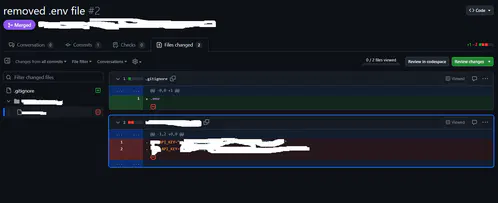Background: 15 years of experience in software and apparently spoiled because it was already set up correctly.
Been practicing doing my own servers, published a test site and 24 hours later, root was compromised.
Rolled back to the backup before I made it public and now I have a security checklist.
Basic setup for me is scripted on a new system. In regards to ssh, I make sure:
- Root account is disabled, sudo only
- ssh only by keys
- sshd blocks all users but a few, via AllowUsers
- All ‘default usernames’ are removed, like ec2-user or ubuntu for AWS ec2 systems
- The default ssh port moved if ssh has to be exposed to the Internet. No, this doesn’t make it “more secure” but damn, it reduces the script denials in my system logs, fight me.
- Services are only allowed connections by an allow list of IPs or subnets. Internal, when possible.
My systems are not “unhackable” but not low-hanging fruit, either. I assume everything I have out there can be hacked by someone SUPER determined, and have a vector of protection to mitigate backwash in case they gain full access.
- The default ssh port moved if ssh has to be exposed to the Internet. No, this doesn’t make it “more secure” but damn, it reduces the script denials in my system logs, fight me.
Gosh I get unreasonably frustrated when someone says yeah but that’s just security through obscurity. Like yeah, we all know what nmap is, a persistent threat will just look at all 65535 and figure out where ssh is listening… But if you change your threat model and talk about bots? Logs are much cleaner and moving ports gets rid of a lot of traffic. Obviously so does enabling keys only.
Also does anyone still port knock these days?
Also does anyone still port knock these days?
Enter Masscan, probably a net negative for the internet, so use with care.
I didn’t see anything about port knocking there, it rather looks like it has the opposite focus - a quote from that page is “features that support widespread scanning of many machines are supported, while in-depth scanning of single machines aren’t.”
Literally the only time I got somewhat hacked was when I left the default port of the service. Obscurity is reasonable, combined with other things like the ones mentioned here make you pretty much invulnerable to casuals. Somebody needs to target you to get anything.
At least you had a backup
I’ve gotta say this post made me appreciate switching to lemmy. This post is actually helpful for the poor sap that didn’t know better, instead of pure salt like another site I won’t mention.
I shared it because, out there, there is a junior engineer experiencing severe imposter syndrome. And here I am, someone who has successfully delivered applications with millions of users and advanced to leadership roles within the tech industry, who overlook basic security principles.
We all make mistakes!
There’s a 40 year I.T. veteran here that still suffers imposter syndrome. It’s a real thing I’ve never been able to shake off
Just look at who is in the White House, mate - and not just the president, but basically you can pick anyone he’s hand-picked for his staff.
Surely that’s an instant cure for any qualified person feeling imposter syndrome in their job.
One time, I didn’t realize I had allowed all users to log in via ssh, and I had a user “steam” whose password was just “steam”.
“Hey, why is this Valheim server running like shit?”
“Wtf is
xrx?”“Oh, it looks like it’s mining crypto. Cool. Welp, gotta nuke this whole box now.”
So anyway, now I use NixOS.
I can’t even figure out how to expose my services to the internet, honestly it’s probably for the best Wireguard gets the job done in the end.
I’m interested, how do you expose your services (on your PC I assume) to the internet through wireguard? Is it theough some VPN?
Wireguard IS a VPN. He has somehow through his challenges of exposing services to the internet, exposed wireguard from his home to the internet for him to connect to. Then he can connect to his internal services from there.
It’s honestly the best option and how I operate as well. I only have a handful of items exposed and even those flow through a DMZ proxy before hitting their destination servers.
Oh, I thought it was a protocol for virtual networks, that merely VPNs used. The more you know!
Edit: spelled out VPN 😅
VPN’s are neat, besides the fact they’re capable of masking your IP & DNS they’re also capable of providing resources to devices outside a network.
A good example is the server at my work is only accessible on my works network, to access the server remotely without exposing it directly to the internet would be to use a VPN tunnel.
On a new linux install or image I will always:
- Make new users(s)
- Setup new user to sudo
- Change ssh port
- Change new user to authenticate ssh via key+password
- Disable root ssh login
- Setup new user to sudo
I hope it is not a passwordless sudo, it is basically the same as root.
That’s more or less the advice I’ve gotten as well. I’ve also read good things about fail2ban which tries to ban sources of repeated authentication failures to prevent brute force password attempts. I’ve used it, but the only person who has managed to get banned is myself! I did get back in after the delay, but I’m happy to know it works.
I’m having the opposite problem right now. Tightend a VM down so hard that now I can’t get into it.
As a linux n00b who just recently took the plunge and set up a public site (tho really just for my own / selfhosting),
Can anyone recommend a good guide or starting place for how to harden the setup? Im running mint on my former gaming rig, site is set up LAMP
Paranoid external security. I’m assuming you already have a domain name. I’m also assuming you have some ICANN anonymization setup.
This is your local reverse Proxy. You can manage all this with a container called nginx proxy manager, but it could benefit you to know it’s inner workings first. https://www.howtogeek.com/devops/what-is-a-reverse-proxy-and-how-does-it-work/
https://cloud9sc.com/nginx-proxy-manager-hardening/
https://github.com/NginxProxyManager/nginx-proxy-manager
Next you’ll want to proxy your IP address as you don’t want that pointing to your home address
https://developers.cloudflare.com/learning-paths/get-started-free/onboarding/proxy-dns-records/
Remote access is next. I would suggest setting up wireguard on a machine that’s not your webserver, but you can also set that up in a container as well. Either way you’ll need to punch another hole in your router to point to your wire guard bastion host on your local network. It has many clients for windows and linux and android and IOS
https://github.com/angristan/wireguard-install
https://www.wireguard.com/quickstart/
https://github.com/linuxserver/docker-wireguard
Now internally, I’m assuming you’re using Linux. In that case I’d suggest securing your ssh on all machines that you log into. On the machines you’re running you should also install fail2ban, UFW, git, and some monitoring if you have the overhead but the monitoring part is outside of the purview of this comment. If you’re using UFW your very first command should be
sudo ufw allow sshhttps://www.howtogeek.com/443156/the-best-ways-to-secure-your-ssh-server/
https://github.com/fail2ban/fail2ban
https://www.digitalocean.com/community/tutorials/ufw-essentials-common-firewall-rules-and-commands
Now for securing internal linux harden the kernel and remove root user. If you do this you should have a password manager setup. keepassx or bitwarden are ones I like. If those suck I’m sure someone will suggest something better. The password manager will have the root password for all of your Linux machines and they should be different passwords.
https://www.makeuseof.com/ways-improve-linux-user-account-security/
https://bitwarden.com/help/self-host-an-organization/
Finally you can harden the kernel
https://codezup.com/the-ultimate-guide-to-hardening-your-linux-system-with-kernel-parameters/
TLDR: it takes research but a good place to start is here
Correct, horse battery staple.
I couldn’t justify putting correct in my username on Lemmy. But I loved the reference too much not to use it, so here I am, a less secure truncated version of a better password.
The other poster gave you a lot. If that’s too much at once, the really low hanging fruit you want to start with is:
-
Choose an active, secure distro. There’s a lot of flavors of Linux out there and they can be fun to try but if you’re putting something up publicly it should be running on one that’s well maintained and known for security. CentOS and Debian are excellent easy choices for example.
-
Similarly, pick well maintained software with a track record. Nginx and Apache have been around forever and have excellent track records, for example, both for being secure and fixing flaws quickly.
-
If you use Docker, once again keep an eye out for things that are actively maintained. If you decide to use Nginx, there will be five million containers to choose from. DockerHub gives you the tools to make this determination: Download number is a decent proxy for “how many people are using this” and the list of updates tells you how often and how recently it’s being updated.
-
Finally, definitely do look at the other poster’s notes about SSH. 5 seconds after you put up an SSH server, you’ll be getting hit with rogue login attempts.
-
Definitely get a password manager, and it’s not just one password per server but one password per service. Your login password to the computer is different from your login to any other things your server is running.
The rest requires research, but these steps will protect you from the most common threats pretty effectively. The world is full of bots poking at every service they can find, so keeping them out is crucial. You won’t be protected from a dedicated, knowledgeable attacker until you do the rest of what the other poster said, and then some, so try not to make too many enemies.
The TLDR is here : https://www.digitalocean.com/community/tutorials/recommended-security-measures-to-protect-your-servers
You won’t be protected from a dedicated, knowledgeable attacker until you do the rest of what the other poster said, and then some,
You’re right I didn’t even get to ACME and PKI or TOTP
https://letsencrypt.org/getting-started/
https://openbao.org/docs/secrets/pki/
https://openbao.org/docs/secrets/totp/
And for bonus points build your own certificate authority to sign it all.
https://smallstep.com/blog/build-a-tiny-ca-with-raspberry-pi-yubikey/
Thank you for this! I’ve got some homework to do!
-
Interesting. Do you know how it got compromised?
I published it to the internet and the next day, I couldn’t ssh into the server anymore with my user account and something was off.
Tried root + password, also failed.
Immediately facepalmed because the password was the generic 8 characters and there was no fail2ban to stop guessing.
deleted by creator
More importantly, don’t open up SSH to public access. Use a VPN connection to the server. This is really easy to do with Netbird, Tailscale, etc. You should only ever be able to connect to SSH privately, never over the public net.
It’s perfectly safe to run SSH on port 22 towards the open Internet with public key authentication only.
https://nvd.nist.gov/vuln/detail/cve-2024-6409 RCE as root without authentication via Open SSH. If they’ve got a connection, that’s more than nothing and sometimes it’s enough.
That attack vector is exactly the same towards a VPN.
A VPN like Wireguard can run over UDP on a random port which is nearly impossible to discover for an attacker. Unlike sshd, it won’t even show up in a portscan.
This was a specific design goal of Wireguard by the way (see “5.1 Silence is a virtue” here https://www.wireguard.com/papers/wireguard.pdf)
It also acts as a catch-all for all your services, so instead of worrying about the security of all the different sshds or other services you may have exposed, you just have to keep your vpn up to date.
wow crazy that this was the default setup. It should really force you to either disable root or set a proper password (or warn you)
Most distributions disable root by default
Which ones? I’m asking because that isn’t true for cent, rocky, arch.
we’re probably talking about different things. virtually no distribution comes with root access with a password. you have to explicitly give the root user a password. without a password no amount of brute force sshing root will work. I’m not saying the root user is entirely disabled. so either the service OP is building on is basically a goldmine for compromised machines or OP literally shot themselves in the root by giving root a password manually. something you should never do.
Yeah I was confused about the comment chain. I was thinking terminal login vs ssh. You’re right in my experience…root ssh requires user intervention for RHEL and friends and arch and debian.
Side note: did you mean to say “shot themselves in the root”? I love it either way.
Mostly Ubuntu. And… I think it’s just Ubuntu.
Ah fair enough, I know that’s the basis of a ton of distros. I lean towards RHEL so I’m not super fluent there.
Lol you can actually demo a github compromise in real time to an audience.
Make a repo with an API key, publish it, and literally just watch as it takes only a few minutes before a script logs in.
I search commits for “removed env file” to hopefully catch people who don’t know how git works.
–verbose please?
edit: never mind, found it. So there’s dumbasses storing sensitive data (keys!) inside their git folder and unable to configure .gitignore…
 yeah, I just tried it there, people actually did it.
yeah, I just tried it there, people actually did it.I always start with .gitignore and adding the .env then making it.
Anywho, there’s git filter-repo which is quite nice and retconned some of my repos for some minor things out of existence :P
I searched for “added gitignore” and I found an etherum wallet with 25 cent.
I do worry about putting up public servers that other people might rely on because there’s something I might not realize making it vulnerable.
So far I have pubkey root login only on the VPSs I’m messing around with, but my ol’ reliable private key from 6 years ago might be beginning to fall behind on encryption standards.
Do not allow username/password login for ssh. Force certificate authentication only!
If it’s public facing, how about dont turn on ssh to the public, open it to select ips or ranges. Use a non standard port, use a cert or even a radius with TOTP like privacyIdea. How about a port knocker to open the non standard port as well. Autoban to lock out source ips.
That’s just off the top of my head.
There’s a lot you can do to harden a host.
Why though? If u have a strong password, it will take eternity to brute force
I’ve been quite stupid with this but never really had issues. Ever since I changed the open ssh port from 22 to something else, my server is basically ignored by botnets. These days I obviously also have some other tricks like fail2ban, but it was funny how effective that was.
Almost the same here. I also change some ssh settings: disable root login, disable password, allow only public key login. That’s about it. I never had any problems.
We’re not really supposed to expose the ssh port to the internet at all. Better to hide it behind a vpn.
But it’s too damn convenient for so many use cases. Fuck it. Fail2Ban works fine.
You can also set up an ssh tarpit on port 22, which will tie up the bot’s resources and get them stuck in a loop for a while. But I didn’t think it was worth attracting extra attention from the bot admins to satisfy my pettiness.
Permitting inbound SSH attempts, but disallowing actual logins, is an effective strategy to identify compromised hosts in real-time.
The origin address of any login attempt is betraying it shouldn’t be trusted, and be fed into tarpits and block lists.
If it is your single purpose to create a blocklist of suspect IP addresses, I guess this could be a honeypot strategy.
If it’s to secure your own servers, you’re only playing whack-a-mole using this method. For every IP you block, ten more will pop up.
Instead of blacklisting, it’s better to whitelist the IP addresses or ranges that have a legitimate reason to connect to your server, or alternatively use someting like geoip firewall rules to limit the scope of your exposure.
Endlessh and fail2ban are great to setup a ssh honeypot. There even is a Prometheus exporter version for some nice stats
Just expose endlessh on your public port 22 and if needed, configure your actual ssh on a different port. But generally: avoid exposing ssh if you don’t actually need it or at least disable root login and disable password authentication completely.
https://github.com/skeeto/endlessh https://github.com/shizunge/endlessh-go https://github.com/itskenny0/fail2ban-endlessh
And this is why every time a developer asks me for shell access to any of the deployment servers, I flat out deny the request.
Good on you for learning from your mistakes, but a perfect example for why I only let sysadmins into the systems.
You’re not wrong! Devops made me lazy
Please examine where devops allowed non-system people to be the last word on altering systems. This is a risk that needs block-letter indemnification or correction.
It’s not that devops made ya lazy. I’ve been doing devops since before they coined the term, and it’s a constant effort to remind people that it doesn’t magically make things safe, but keeping it safe is still the way.
Ah not to discount devops, I mean that in a good way.
Devops made me lazy in that for the past decade, I focus on just everything inside the code base.
I literally push code into a magic black box that then triggers a rube goldberg of events. Servers get instanced. Configs just get magically set up. It’s beautiful. Just years of smart people who make it so easy that I never have to think about it.
Since I can’t pay my devops team to come to my house, I get to figure it all out!
We have it at my company its just a very small group and we have to manually enable it for production and its through tools like teleport. Staging and the like its free game there for them for debugging, same infra through. Gives us best of all worlds














